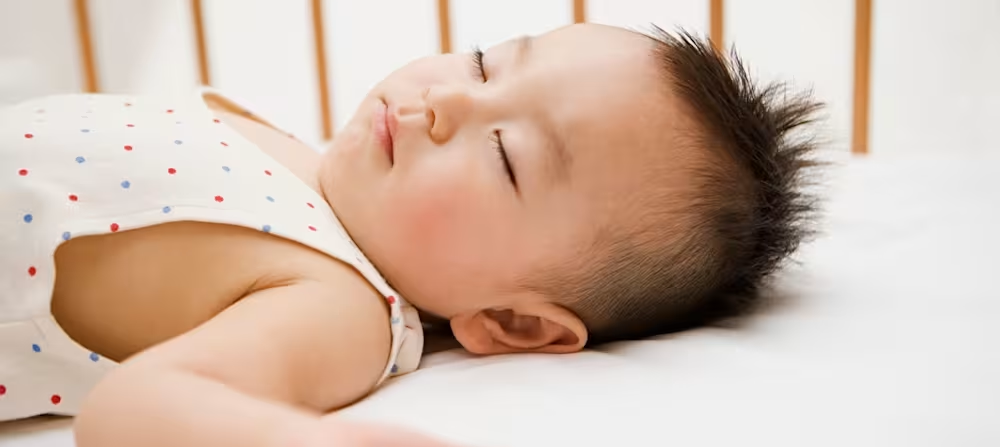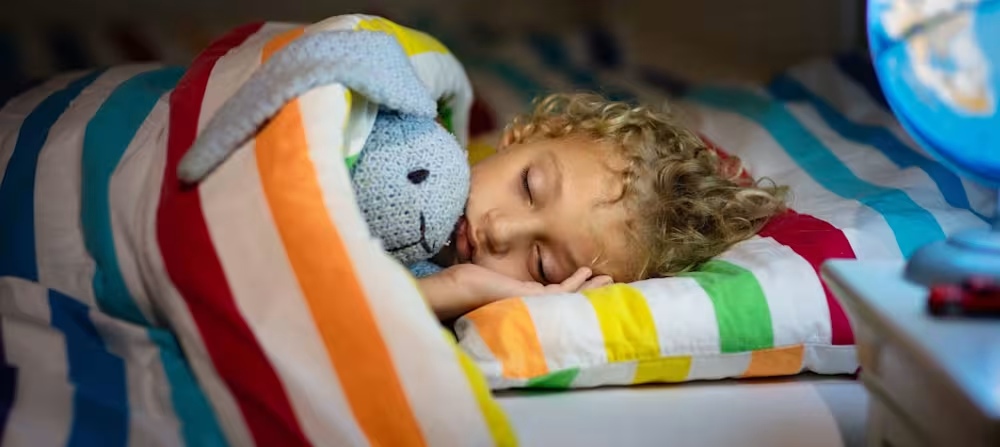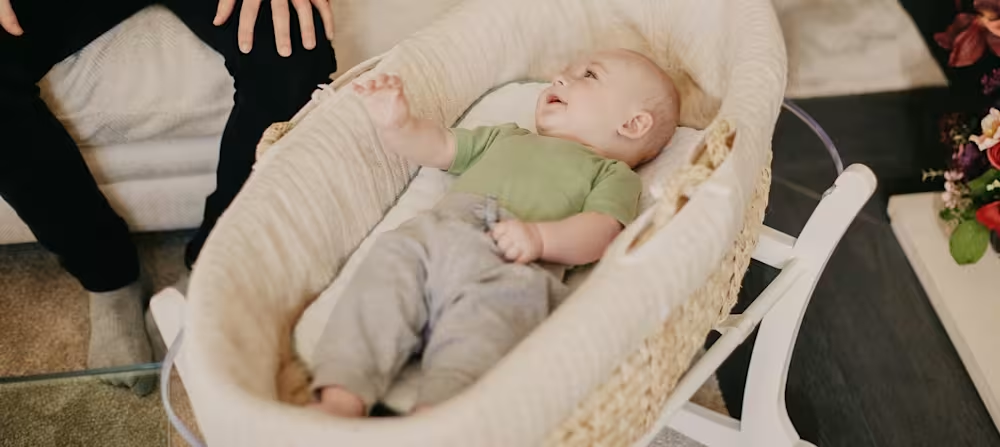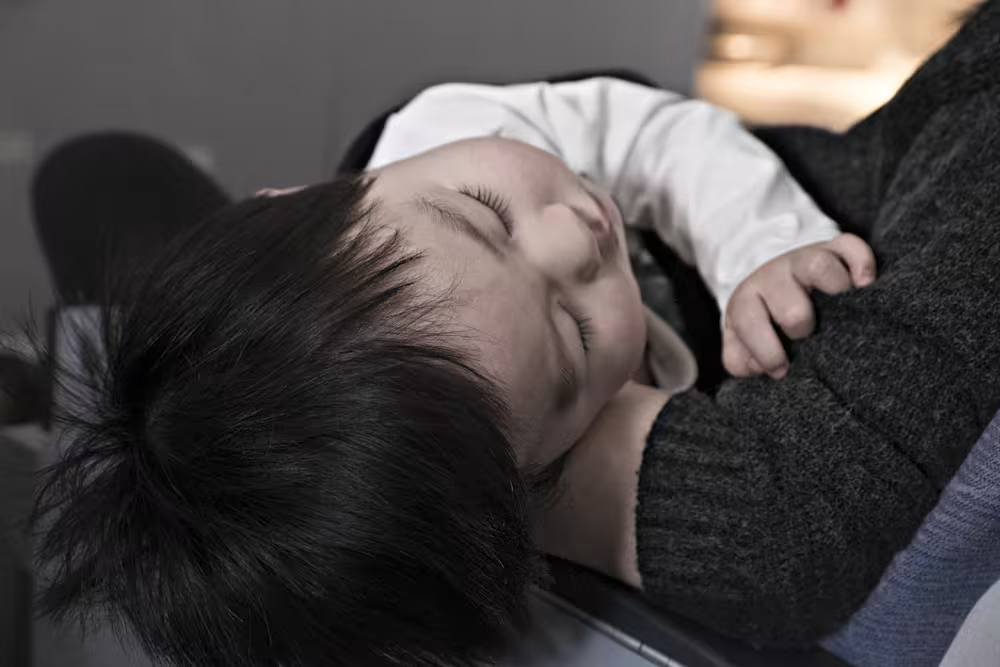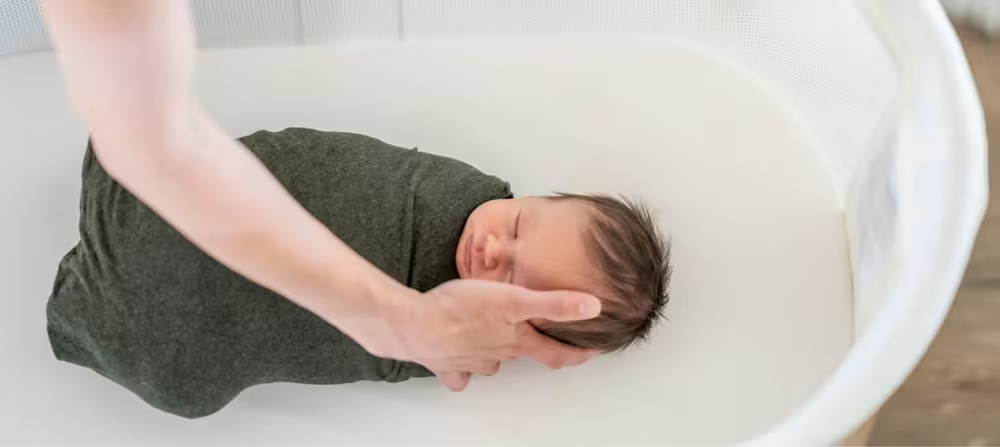How to get your baby to sleep in a crib
Updated Dec 29, 2025

It’s all too common: you’re desperately trying to reach the television remote with your toes because you’re trapped underneath (and afraid to wake) the crib-phobic baby sleeping on your chest. We’ve been there and understand the struggle. Some babies don’t like their cribs and find it hard to fall asleep or stay asleep in them. Try not to be discouraged — we’ve got solutions for you!
How do I introduce a crib to my baby?
It’s never too early to introduce your baby to the crib and determine . Even if you decide to use a bassinet or other safe sleep space [] initially, you can help your baby acclimate to the crib during non-sleep playtime.
Offer some daily playtime in the crib for 5 - 10 minutes to help your baby view it as a happy place. Sing songs or play peek-a-boo, and practice leaving for short periods of time to help build feelings of security in the crib.
Can a newborn sleep in a crib?
Yes! Your newborn can sleep in a crib from day one if you choose. Just like a bassinet, you should always follow safe sleeping guidelines. A crib mattress should be firm, the fitted sheets nice and snug, and the mattress completely free of any blankets, pillows, stuffed animals, or bumpers.
My baby won’t sleep in the crib. What should I do?
If your baby refuses to sleep in a crib, it's typically because they are used to falling asleep outside of their crib, e.g. in their parent’s arms or in a stroller.
Other reasons your baby doesn't want to sleep in a crib may include:
Separation anxiety
Teething
Illness
Sleep regression
Start by giving your baby opportunities to fall asleep in the crib. When it's time for bed, leave your baby in the crib awake after a calming . Bedtime is often the easiest time of the day to introduce a change to routine, especially if you’ve made sure your child is fed, comfortable, and had plenty of snuggle time.
Give your baby the chance to work out how to fall asleep in this new space. Stay close by and pat your baby or rhythmically “shhhh” to help lull them to sleep. Try not to be discouraged if they struggle at first. How easily a baby accepts a change in routine will depend on many factors, including their age and temperament. You can always try again the next night.
5 tips and tricks for getting your baby to sleep in a crib
Tip | Why it helps | How to do it |
|---|---|---|
Set them up for success | Well-rested babies adjust more easily to changes in sleep routines. A strong foundation reduces resistance at bedtime. | Stick to age-appropriate wake windows, a consistent bedtime routine, and a safe, calm sleep environment. |
Offer regular crib opportunities | Babies learn where they are by how they fall asleep. Practice helps them feel more comfortable settling in the crib. | Try putting your baby down in the crib when they’re drowsy but not fully asleep, even for short attempts. |
Keep practicing | New sleep skills take time to develop. Progress is rarely instant — and that’s OK! | Stay consistent, expect some ups and downs, and keep offering chances to sleep in the crib without pressure. |
Have a backup plan | Flexibility prevents overtiredness and helps preserve positive sleep associations. | If crib practice isn’t working after 15 - 20 minutes, help your baby get to sleep another way and try again later. |
Check with your doctor if needed | Medical issues like reflux or discomfort can interfere with crib sleep and should be ruled out. | Talk to your pediatrician if sleep struggles persist or seem pain-related. |
Find more details below:
Tip #1: Set them up for success
It sounds counterintuitive, but overtired children generally have a much harder time falling asleep and staying asleep. Laying a solid foundation for healthy sleep habits can make it much easier for children to accept changes to their sleep routines (i.e., sleeping in the crib instead of on you or ). Cover the basics to make sleep easier: follow an age-appropriate , use a consistent , and set up a .
Tip #2: Present opportunities
It’s common for babies to fall asleep in their parent’s arms and then protest when they wake up in the crib. We can’t blame babies for being upset when they awaken in a different (less snugly) location! Giving your baby regular opportunities to fall asleep in the crib can help them learn how to fall back to sleep easier [] in the crib as well.
Tip #3: Keep practicing
Can you master a new habit (like drinking enough water or sitting up straight) in one day, or even in one week? Probably not, and neither can your baby. Establishing healthy patterns takes practice. Continue to work with your baby to sleep in the crib, and expect it to take some time. Don’t give up if it’s challenging at first. Your baby can do this!
Tip #4: Have a backup plan
Despite your best efforts, there will be times when your baby will resist sleeping in the crib, especially if your baby is under 6 months old. Newborns and younger infants often need more help sleeping. You might decide that 15 - 20 minutes is enough time to practice in the crib before picking your baby up and helping them to sleep in your arms.
If your baby falls asleep while you’re holding them, lower them into the crib without letting their head tip backward. The goal will be to place your baby’s lower half on the mattress first, while gently cradling their head to help prevent the feeling of falling. That falling sensation leads many babies to wake while being moved into the crib.
Tip #5: Check with your doctor
Think there’s something more going on? Be sure to consult with your pediatrician if you think your child is having trouble sleeping in the crib due to discomfort from reflux [] or another medical condition.
While inclined sleeping surfaces were commonly recommended for babies with reflux in the past, the American Academy of Pediatrics (AAP) recommends always placing your baby to sleep on a flat, firm surface to reduce the risk of sleeping-related infant death [].
When to stop using a crib
Some common signs your little one is ready to transition from a crib to a big kid bed include:
Climbed out (or attempted to climb out) of their crib
Grown 35 inches tall
Started to outgrow the crib, and a bed would be more comfortable
Shown they’re able to understand the meaning of external visual cues
Been responsive to the limits you set surrounding bedtime
Asked for a big kid bed
The American Academy of Pediatrics [] recommends making the once they’re 35 inches tall, which typically happens between 18 - 24 months. The biggest reason? Once they've outgrown their crib, they can try to climb out, increasing the risk of falls and injuries. This typically happens when the crib rail is about chest level.
However, many toddlers do not attempt to climb out. For those who are comfortable in their crib and aren't inclined to climb, transitioning to a bed around 3 years of age often proves more successful.
Before reaching 3 years old, most toddlers lack the self-discipline to stay in a bed without physical boundaries. As a result, if the transition to a bed happens before this age, it's common for toddlers to frequently get up during bedtime and in the middle of the night.
Takeaway
While we can’t wave a magic wand and get your baby to instantly sleep well in the crib, we can see progress with enough patience and practice.
A good way to start is by giving your child regular opportunities to fall asleep in their crib. Try not to get discouraged if this doesn't go as planned at first!
If you feel like the process is more difficult than it should be, and you and your doctor have ruled out medical issues, it might be time to call in reinforcements. With , our sleep experts can design a customized plan to help your child achieve your sleep goals.
How to get baby to sleep in crib FAQ
Share article:
Note: The content on this site is for informational purposes only and should not replace medical advice from your doctor, pediatrician, or medical professional. If you have questions or concerns, you should contact a medical professional.

